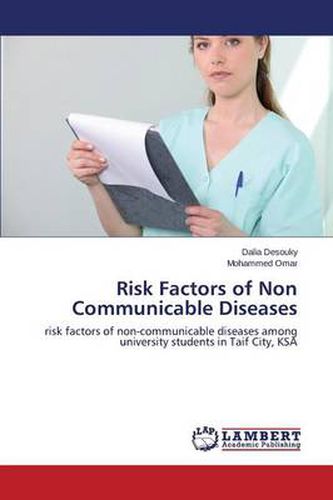Readings Newsletter
Become a Readings Member to make your shopping experience even easier.
Sign in or sign up for free!
You’re not far away from qualifying for FREE standard shipping within Australia
You’ve qualified for FREE standard shipping within Australia
The cart is loading…






This title is printed to order. This book may have been self-published. If so, we cannot guarantee the quality of the content. In the main most books will have gone through the editing process however some may not. We therefore suggest that you be aware of this before ordering this book. If in doubt check either the author or publisher’s details as we are unable to accept any returns unless they are faulty. Please contact us if you have any questions.
Two-thirds of 2010 deaths worldwide were caused by non-communicable diseases with Cardiovascular diseases, hypertension and diabetes mellitus come on top of the causes of mortality. In 2008, 26.6 per 1000 female population deaths, and 46 per 1000 male population deaths in Saudi Arabia were attributed to non-communicable diseases. Data about the magnitude of NCDs among young population in the KSA are scarce. The aim of this study was to assess the prevalence of risk factors of non-conmmunicable diseases among female university students. Total coverage was carried out and a cross sectional study was done using the Arabic version of the WHO STEPs approach. The study showed that 3.1% of the students were current smokers, 61.7% were physically inactive, most of the students weren’t consuming adequate amounts of fruits and vegetables. The prevalence of overweight, mild obesity and sever obesity among the students was (28.6%, 15% and 3.1% respectively). 2.5% of the students had unacceptable fasting blood glucose level, 31.1% had unacceptable fasting blood cholesterol level and 33.6% had unacceptable fasting blood triglycerides. A significant negative correlation was found between the BMI
$9.00 standard shipping within Australia
FREE standard shipping within Australia for orders over $100.00
Express & International shipping calculated at checkout
This title is printed to order. This book may have been self-published. If so, we cannot guarantee the quality of the content. In the main most books will have gone through the editing process however some may not. We therefore suggest that you be aware of this before ordering this book. If in doubt check either the author or publisher’s details as we are unable to accept any returns unless they are faulty. Please contact us if you have any questions.
Two-thirds of 2010 deaths worldwide were caused by non-communicable diseases with Cardiovascular diseases, hypertension and diabetes mellitus come on top of the causes of mortality. In 2008, 26.6 per 1000 female population deaths, and 46 per 1000 male population deaths in Saudi Arabia were attributed to non-communicable diseases. Data about the magnitude of NCDs among young population in the KSA are scarce. The aim of this study was to assess the prevalence of risk factors of non-conmmunicable diseases among female university students. Total coverage was carried out and a cross sectional study was done using the Arabic version of the WHO STEPs approach. The study showed that 3.1% of the students were current smokers, 61.7% were physically inactive, most of the students weren’t consuming adequate amounts of fruits and vegetables. The prevalence of overweight, mild obesity and sever obesity among the students was (28.6%, 15% and 3.1% respectively). 2.5% of the students had unacceptable fasting blood glucose level, 31.1% had unacceptable fasting blood cholesterol level and 33.6% had unacceptable fasting blood triglycerides. A significant negative correlation was found between the BMI